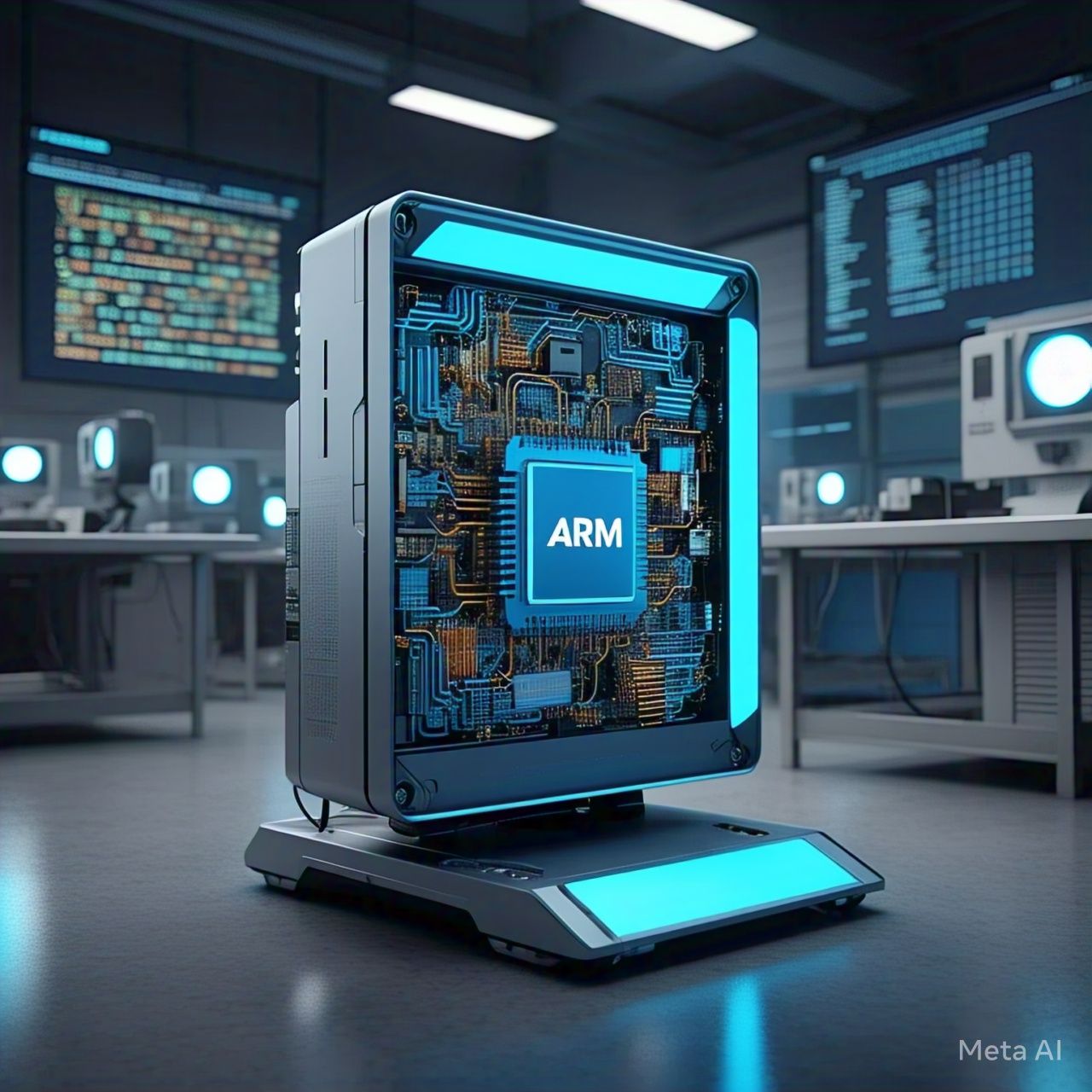Table of Contents
- Introduction
- What Are ARM Processors?
- The Evolution of ARM Processors
- Key Features of ARM Processors
- ARM vs. x86: A Comparison
- Applications of ARM Processors
- The Role of ARM in Mobile Computing
- ARM’s Expansion into Laptops and Desktops
- ARM in Data Centers and Cloud Computing
- The Future of ARM Processors
- Conclusion
- FAQs
- References
1. Introduction
The rise of ARM processors has been one of the most significant shifts in modern computing. Traditionally, computing was dominated by x86 processors from Intel and AMD, but ARM has disrupted the landscape with its energy efficiency, scalability, and performance. From smartphones to supercomputers, ARM-based chips are now used in a wide range of applications, challenging the dominance of traditional computing architectures.
This article explores the evolution, benefits, applications, and future of ARM processors in the computing industry.
2. What Are ARM Processors?
ARM (Advanced RISC Machine) processors are Reduced Instruction Set Computing (RISC) chips designed for efficiency and performance. Unlike traditional x86 processors that use Complex Instruction Set Computing (CISC), ARM chips execute simpler instructions, allowing for greater power efficiency and lower heat output.
Key Characteristics:
- Low power consumption – Ideal for mobile and embedded devices.
- Scalability – Found in everything from smartphones to servers.
- Efficient instruction set – Uses RISC for optimized performance.
- Licensing model – Companies can design custom ARM chips.
3. The Evolution of ARM Processors
ARM processors have evolved significantly since their inception in the 1980s. Initially designed for embedded systems, they are now powering high-performance computing applications.
| Year | Milestone |
|---|---|
| 1985 | Acorn Computers develops the first ARM processor. |
| 1991 | ARM Ltd. is founded, focusing on processor design. |
| 2000s | ARM chips dominate the smartphone market. |
| 2010s | Apple, Samsung, and Qualcomm push ARM performance. |
| 2020s | Apple transitions Mac computers to ARM-based Apple Silicon. |
| 2023 | ARM chips enter data centers and supercomputing. |
4. Key Features of ARM Processors
ARM processors offer several advantages over traditional architectures:
Power Efficiency
- ARM chips consume less power, making them ideal for battery-operated devices.
Performance per Watt
- Modern ARM designs provide high performance with low energy requirements.
Customization and Scalability
- ARM’s licensing model allows companies to design custom chips optimized for specific applications.
Cost-Effectiveness
- ARM processors are generally more affordable than x86 chips, especially in mass production.
5. ARM vs. x86: A Comparison
| Feature | ARM Processors | x86 Processors |
| Architecture | RISC (Reduced Instruction Set Computing) | CISC (Complex Instruction Set Computing) |
| Power Consumption | Low | High |
| Performance Efficiency | Optimized for mobile and cloud | High raw performance but less efficient |
| Heat Output | Minimal | High, requiring cooling solutions |
| Customizability | Highly customizable | Limited to Intel and AMD designs |
6. Applications of ARM Processors
ARM processors are used in a variety of applications, including:
- Smartphones and tablets – The dominant architecture in mobile devices.
- Laptops and desktops – Apple M-series chips have proven ARM’s potential in PCs.
- IoT and embedded systems – Found in smart home devices, medical equipment, and more.
- Automotive computing – Used in advanced driver-assistance systems (ADAS).
- Cloud computing – AWS and Google Cloud have integrated ARM chips into their data centers.
7. The Role of ARM in Mobile Computing
ARM’s dominance in the smartphone industry is unparalleled. Major brands like Apple, Samsung, and Qualcomm rely on ARM-based chips for their mobile devices.
Why ARM is Ideal for Mobile Devices:
- Energy efficiency extends battery life.
- High performance supports demanding applications.
- Integrated GPUs enhance gaming and multimedia.
- 5G and AI optimizations improve mobile connectivity and processing.
8. ARM’s Expansion into Laptops and Desktops
The transition of Apple’s Mac lineup to ARM-based Apple Silicon has showcased the power of ARM in personal computing. The M1, M2, and M3 chips have outperformed many traditional x86 processors in terms of performance per watt.
Key Advantages of ARM in PCs:
- Silent, fanless designs due to lower heat output.
- Longer battery life compared to x86-based laptops.
- Native support for macOS, Windows on ARM, and Linux distributions.
9. ARM in Data Centers and Cloud Computing
Major cloud providers like AWS, Microsoft Azure, and Google Cloud are adopting ARM-based chips for their energy efficiency and scalability.
Benefits of ARM in Data Centers:
- Lower operational costs due to reduced power consumption.
- High scalability for handling large-scale cloud workloads.
- Optimized performance for AI, machine learning, and web services.
Example: AWS Graviton
- Amazon’s Graviton processors provide 40% better price-performance than traditional x86 servers.
10. The Future of ARM Processors
ARM’s influence in computing is expected to grow further, with trends including:
- Advancements in AI processing – ARM chips integrating Neural Processing Units (NPUs).
- Expansion into high-performance computing (HPC) – ARM-powered supercomputers are emerging.
- Wider adoption in gaming – ARM-based gaming laptops and consoles could become mainstream.
- Continued competition with x86 – Intel and AMD are adapting to ARM’s rise with efficiency-focused designs.
11. Conclusion
The rise of ARM processors is revolutionizing modern computing. With their power efficiency, scalability, and increasing performance capabilities, ARM chips are challenging traditional x86 architectures across mobile, PC, cloud, and AI applications. As more companies adopt ARM-based designs, the future of computing is set to be more efficient, cost-effective, and performance-driven.
12. FAQs
1. Why are ARM processors more power-efficient than x86?
ARM processors use a Reduced Instruction Set Computing (RISC) architecture, which requires fewer instructions per cycle, resulting in lower power consumption.
2. Can ARM processors replace x86 in all applications?
Not entirely. While ARM is excelling in mobile, laptops, and cloud computing, x86 processors still dominate high-performance computing and legacy enterprise applications.
3. What is Apple Silicon?
Apple Silicon refers to Apple’s custom ARM-based processors, such as M1, M2, and M3, designed for MacBooks and iMacs, offering high efficiency and performance.
4. Are ARM-based laptops better than Intel or AMD laptops?
ARM-based laptops provide better battery life and efficiency, but software compatibility with certain legacy applications may still be a challenge.
5. What is the future of ARM processors?
ARM is expected to expand into high-performance computing, AI, cloud services, and gaming, with ongoing innovations in power efficiency and performance.




